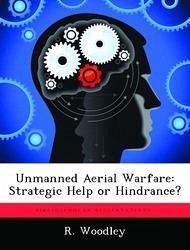This paper examines whether the US can maintain political and public support for limited military operations conducted by unmanned aerial assets. It finds that historically the American public is motivated to support operations because of passions, traditions and faith. Furthermore, politicians have typically made an effort to "unite at the waters edge." These historical guidelines serve as a basis for subsequent analysis. Next, a comparison is made between the manned air strike against Libya in 1986 and the unmanned air strikes against Iraq (1993), and Afghanistan / Sudan (1998). This comparison finds that unmanned assets offered advantages over manned systems. These advantages include the ability to quell concerns over friendly losses and potential POWs, the ability to keep the planning process secure until execution, minimizing negative pre-hostility press and exploiting the tendency to "rally behind the flag," especially since the action is introduced ex post facto. The author then examines a limited war scenario using Operation ALLIED FORCE as a baseline for comparison to a notional war using unmanned assets.








